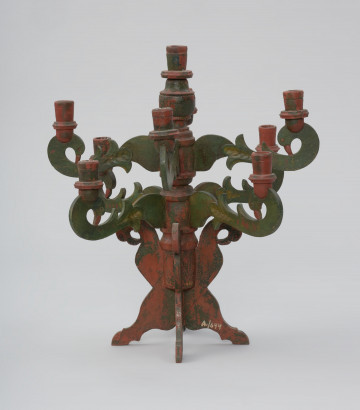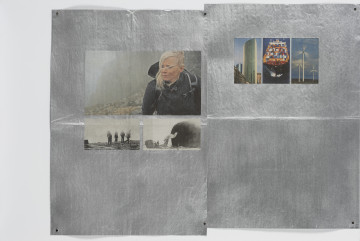
Candlestick
XIX wiek
National Museum in Szczecin
Part of the collection: Pyrzycka folk culture
A tulip-shaped candlestick could have originated only in the Pyrzyce region, where this flower was a favourite ornamental motif. It appeared with colonists from the Netherlands and Friesland, who came to West Pomerania mainly in the second half of the 18th century. For them, it was a symbol of wealth and prosperity. The candlestick consists of three main parts: a round base supported on three legs, a profiled shaft cut in the shape of a tulip, and the upper part is the holder for the candle and in form is a reduced version of the lower part of the shaft. The candlestick gives the impression of a light and delicate object, just like the subtle 'living' tulip. The ‘two-tulip’ candlestick probably illuminated a small alcove/bedroom, i.e., a room at the back of a sizeable Saxon-type house, characteristic of the Pyrzyce region. A stearin candle probably burned in it. Their production began in 1825 in France, from where it soon spread throughout Europe. Rich people used them to replace tallow candles made from sheep or beef tallow. Tallow candles emitted a characteristic, not a very pleasant smell. Therefore, they were used only in the utility rooms in wealthy homes. A wax candle, made from inferior wax, could also burn in the candlestick, as only such candles were affordable for the villagers. Candles were always one of the few goods that the inhabitants of highly self-sufficient villages in the 18th and 19th centuries had to buy with cash.
Iwona Karwowska
Author / creator
Dimensions
cały obiekt: height: 38 cm, diameter: 12 cm
Object type
lighting devices
Creation time / dating
Creation / finding place
Identification number
Location / status

XIX wiek
National Museum in Szczecin

2022
National Museum in Szczecin

50 — 100
National Museum in Lublin
DISCOVER this TOPIC
National Museum in Lublin
DISCOVER this PATH
Educational path